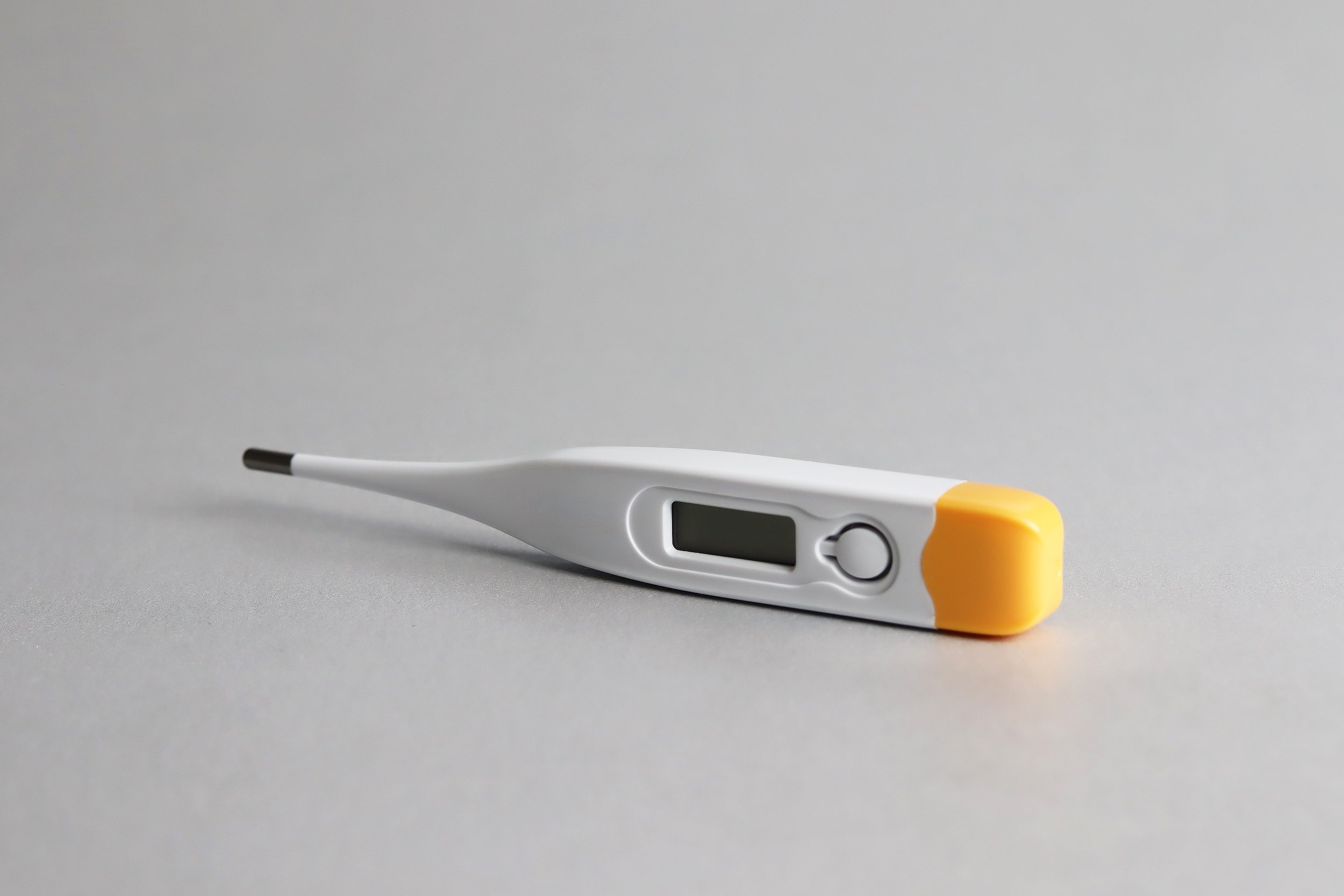Alternative Birth Control Options for PCOS
Let’s chat hormonal birth control. Typically, when the topic of birth control comes up in conversation, it’s either positive or negative, with no real in-between. It’s the pinnacle love-hate relationship, am I right?!
As many women know, when you ask about options at the doctor’s office, you’re typically given only a couple of choices. This may be the hormonal IUD, patch, ring, or the pill.
So, what happens if you don’t want hormonal options?
There’s a big possibility your doctor may be able to provide some additional options, but babe, there’s SO much power in knowledge, so let’s dig into how hormonal birth control and PCOS interact together and the different birth control options out there.
Hormonal Birth Control and PCOS
Unfortunately, PCOS is one of those conditions that doesn’t have an exact answer or cure, but there are treatment options out there. A conventional treatment option commonly recommended by doctors for PCOS is hormonal contraceptives. The way hormonal birth control is thought to treat PCOS is by working to “lower the production of male hormones”, also known as androgens, and trying to provide some regularity to the menstrual cycle.
However, not all types of hormonal birth control work the same way for managing PCOS symptoms. And they can come with a host of other side effects such as weight gain, nausea, mood changes, abnormal uterine bleeding, and a host of other issues that sound eerily similar to PCOS symptoms.
So, what is the best birth control option for PCOS? Let’s dig into the different non-hormonal options you have available to you.
Barrier Methods of Birth Control
There are a ton of barrier methods birth control options available to women. But what are they and what are the risks, benefits, and failure rates?
Male Condoms: A male condom is a thin, closed cover made of latex, plastic, or animal membrane that is worn over an erect penis during sex. According to ACOG, latex and polyurethane condoms provide the most optimal protection against many STIs, including HIV. However, with male condoms, it’s important to follow the instructions for use carefully and to make sure that the condom is not expired or damaged before using it and it’s put on at the right time. Some of the main benefits of using them are widespread availability (seriously, you can find them everywhere), no impact on natural hormones, and even STI protection. The typical use failure rate is 13%.
Female Condoms: Contrary to the male condom, the female condom is a thin plastic pouch that lines the inside of the vagina. This type of condom works by having a thin ring that goes around the cervix and the entrance to the vagina. As with the male condom, it’s critical boo to follow instructions exactly and to make sure that the condom is not expired or damaged before using it. But also like the male condom, it also can protect against STIs. One interesting fact though, is that internal female condoms can be inserted up to 8 hours before sex, allowing you to plan ahead as needed. Typical use has a failure rate of 21%.
Spermicide: Spermicide is a chemical that inactivates sperm and is 79% effective at preventing pregnancy alone. Spermicide can be used alone or with all other barrier methods except the sponge, which traditionally already contains a spermicide. No need to double up! There are a number of different kinds of spermicide available including gels, foams, film, and suppositories. One of the drawbacks to using spermicide is that in most cases, you’ll need to wait at least 15 minutes for it to become effective and they’re only good for about an hour. It also can cause allergies, vaginal discomfort, and UTIs for some who choose to use this method.
Sponge: The sponge is a round soft device that is placed at the top of the vagina at the cervix to cover it. It works to block sperm from entering the cervix. As mentioned, the sponge also usually contains spermicide to boost its pregnancy-preventing ability. Unfortunately, it has no ability to protect against STIs and it’s not a good option for women who have recently given birth due to the openness of the cervix. Because of this babe, it makes the typical use failure rate for women who haven’t given birth 14% and 27% for women who have given birth. Additionally, the same risks of discomfort due to the pairing of spermicide can also occur. Lastly, it’s critical to remove the sponge after use to avoid the rare, but very serious, Toxic Shock Syndrome.
Diaphragm: The diaphragm is a tiny, dome-shaped device made of silicone or latex. It’s meant to go inside the vagina and cover the cervix. As with the sponge, the diaphragm must be used with spermicide. When getting one, one challenge is that it’s not as readily available as other options like the condom or spermicide. In order to get a diaphragm, you must get a prescription and be professionally fitted by a doctor. Another downside is if you experience any changes in your body, such as weight gain or loss, have a baby, or have surgery on your abdomen or pelvic region, you’ll need to be refitted. Lastly, you’re at increased risk for irritation, odor, Toxic Shock Syndrome, and UTI. The typical use failure rate is 17%.
Cervical Cap: Similar to the diaphragm, the cervical cap is a dome of plastic meant to fit over the top of the cervix. It’s a slightly different shape but is also used with spermicide to provide additional protection. Some of the risks include infection, irritation, or odor. In particular, the cervical cap cannot be used on your period due to the risk of Toxic Shock Syndrome. The failure rate is around 29%.
As you can see, the options are plentiful for barrier methods, but they each come with their pros and cons that need to be weighed. Some can be combined, others are standalone, and some are easier to come by than others. Finding the right option for you and your lifestyle is what’s most important when trying to find a non-hormonal PCOS birth control method.
Non-Hormonal IUD
Beyond barrier methods, there’s another that’s even more conventional and highly effective. A non-hormonal intrauterine device (IUD) is a small, T-shaped device made of copper that is inserted into the uterus by your doctor. The copper on the IUD acts as a copper-based spermicide, immobilizing and killing sperm before it can even reach the egg. Additionally, the copper on the IUD can cause inflammation in the uterus, which further helps prevent pregnancy. One of the most alluring benefits of this method is that the non-hormonal IUD can remain in place for up to 10 years and is highly effective in preventing pregnancy. The failure rate of less than 1%. Plus, you can experience a natural cycle with this IUD.
A few limitations include cost barriers, pain upon insertion for some women (especially those that haven’t given birth), the possibility of perforation, heavier persistent periods, and intense cramping. But, for long-lasting, very effective birth control without hormones, it may be just what you’re looking for. The best case to explore this option is to discuss it with your doctor to see if the benefits outweigh any risks or challenges to you.
Fertility Awareness Methods of Birth Control
Thought we were done? There are even more options available to you boo, let’s dig into our last section of alternative birth control options for PCOS, and fertility awareness methods. These methods of birth control, also referred to as FAM, involve tracking and monitoring various indicators of your natural cycle to pinpoint your fertile windows and avoid unprotected sex during that time.
There are several different fertility awareness methods ranging from a 2% to a 21% typical use failure rate:
Basal body temperature (BBT) method: This method involves tracking your basal body temperature, which is different than just your typical body temp, daily to determine if you’ve experienced a small rise in temperature that indicates ovulation has already occurred. Besides relying on your body’s natural cycle, it gives you the freedom of having unprotected sex when you have correctly verified your fertile window has ended. You’ll need to purchase a reliable, BBT-specific thermometer to begin recording your temps. These temps must be recorded prior to getting out of bed, at the same time of day, every day. However, without proper training and a good history of your personal temps, it can be challenging to rely on this method alone. That’s why I recommend the TempDrop, a wearable sensor that filters out external variables like getting less sleep or drinking alcohol. I have tons more information (and discounts) on the TempDrop in my new, upcoming program The PCOS Thrive Hive! When used correctly, a BBT can help us prevent pregnancy without the use of synthetic hormones! Winning!!
Calendar method: You may have heard of this one referred to as the ‘rhythm’ method, and it’s unfortunately infamous. This particular method involves tracking the length of your menstrual cycle over several months to predict the days when you are most likely to ovulate based on a calendar. Which, if you have PCOS, can be especially difficult. I personally would not recommend this method to women with PCOS.
Cervical mucus method: This method involves tracking changes in the texture and amount of cervical mucus to determine when ovulation is likely to occur. There are different kinds of cervical mucus methods of teaching that you can actually learn from an educator, such as the Billings method. I personally would not recommend this method to women with PCOS either, as cervical mucus can be super unreliable.
There are some potential risks and downsides to these methods. As mentioned, some are less effective than others, and they all require some education and accuracy. If you’ve just had a baby, or have just stopped hormonal birth control, your body may need time to regulate before commencing with this method. In the interim though, you can track your biomarkers to learn and see how that regulation is going.
But what about PCOS? If you feel like pursuing a FAM method could be right for you, it’s important to know that these are best utilized with good education, dedication, and patience. If you’re worried about your irregular cycle and PCOS, they’re not totally off the table for you. You may just need the right guidance and PCOS treatment to improve your natural cycles. And it is possible! Let’s talk to see how we can work to get your cycles back on track and make these methods an easier reality for you.
Choosing the Best PCOS Birth Control Option
No matter what you choose, ensure you follow the guidelines and directions to a tee to prevent pregnancy!
Outside of the “usual” methods, you have so many options for alternative birth control methods babe. As we read, these PCOS-friendly birth control options include fertility awareness-based methods (FABMs) such as tracking ovulation and basal body temperature, diaphragms and cervical caps, contraceptive sponges, and spermicide.
As a part of working with me, I can help provide information like this to help you make the best, informed choices for your chosen birth control methods. Then, using the power of food as preventative medicine and real science, we work to take control of your PCOS symptoms.
When I say real science, that means you won’t be told to do “this or that” to “cure” your PCOS if we don’t have evidence-based research to support it. As a Registered Dietitian, I have worked through my research and studies to create personalized programs that exclusively focus on teaching women how to optimize their hormone health through basic lifestyle changes. These lifestyle changes often include simple exercise routines, more balanced meals, and an understanding of powerful PCOS supplements. Together, we’ll work to let you take charge of your PCOS and your cycle.
Ready to get started? Drop me a line.



